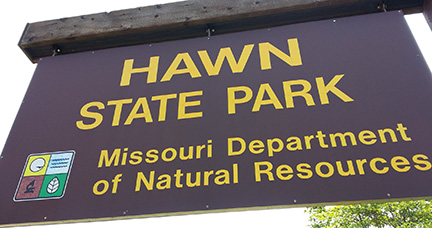by Matt Ankney, outdoor photographer, Ozark wilderness guide, and founder of SAVE HAWN!
The Missouri Department of Natural Resources (DNR) is the main regulator of the environment on the state level. The DNR’s original intent and mission statement is to “protect the air, land, (and) water…”, determining whether or not something you and your loved ones consume or are exposed to causes cancer or makes you sick by constantly monitoring manmade pollution and harmful industrial toxins around us, stopping and removing them when necessary.
The DNR is similar to our referee or environmental umpire, using a sports metaphor. One of the DNR’s main functions is to determine balls and strikes in all things relating to the environmental health of Missouri using the most up to date scientific methods available without interference from money in politics or profit-driven special interest groups like the mining industry.

In the recent case of the NexGen Silica mine slowly being installed across from Hawn State Park in Ste. Genevieve County, the DNR refuses to perform an environmental impact study on the mine’s potential harm to the air quality, aquifer, wildlife, noise pollution, light pollution, streams, farms, parks, wineries, and locals’ health living off Highway 32, Sprott Road, and Highway C.
The DNR understands performing a study might lead to actual facts about how the open pit mine would be harmful. That scientific data would pose problems to the state desperate to facilitate the installation of a 400 acre fracking sand mine across from one of their most popular parks owned by all Missourians who in large numbers rejected the unpopular proposal over the last year.

If the game is that a lynchpin in the mine’s installation is not performing a study by the state agency responsible, simply approving any permit that lands on the desk of the DNR’s Mining and Land Reclamation Office, then the vulnerable residents of Ste. Genevieve should organize crowdfunding an environmental impact study themselves, releasing the data publicly once complete.
A quick Google search of available environmental impact studies in the area costs around $1,500 on the low end and $6,000 on the high end. If a study is conducted for a business like agriculture or wine making, it might qualify for tax benefits; consult your local certified accountant for more information.
Matt Ankney is an outdoor photographer, Ozark wilderness guide, and founder of SAVE HAWN!.
For more information about this topic: (20+) SAVE HAWN! | Facebook
